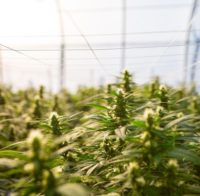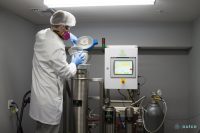A pair of Ohio lawmakers officially put their plans into action July 30 by formally filing adult-use cannabis legislation in the state’s House—the first of its kind in the state.
Democratic Reps. Casey Weinstein and Terrence Upchurch, both representing Northeast Ohio districts, first introduced their 180-page bill two weeks ago, which includes four major components: decriminalization, a cannabis excise tax, commerce and licensing, and medical cannabis.
More specifically, the Ohio Medical Marijuana Control program would remain intact, and licensed operators could pursue additional licenses to enter the adult-use market.
According to a memo Weinstein and Upchurch sent to fellow House members two weeks ago, the bill would enable municipalities to restrict the type and number of cannabis establishments operating within their jurisdictions and require the Department of Commerce to adopt rules related to the licensure of cannabis businesses. And the bill would impose restrictions on the cultivation, processing, transportation and sale of cannabis.
Also, the legislation would allow adults 21 and older to buy and possess up to 5 ounces of cannabis and grow as many as 12 plants for personal use.
“It’s time to lead Ohio forward,” Weinstein said in a joint press release issued Friday. “This is a big step for criminal justice reform, for our veterans, for economic opportunity, and for our individual liberties.”
On the map, Ohio’s neighbor to the northwest, Michigan began commercial sales of adult-use cannabis in December 2019 and has attracted Ohioans’ business since. Meanwhile, Pennsylvania state lawmakers are knocking on legalization’s door to the east.
As for criminal justice reform, Ohio’s jails and prisons incarcerated 68,528 people in 2019. As of 2014, Blacks (1,625 per 100,000) were 5.6 times more likely to be locked up than white Ohioans (289 per 100,000), according to the U.S. Bureau of Justice Statistics.
In states that have already reformed cannabis prohibition, incarceration rates, especially for non-violent criminals, such as those who possess cannabis, have decreased dramatically. In Colorado, cannabis arrests plummeted 68% from 2012 to 2019.
The Ohio legislation would allow for adult cultivation and possession of cannabis and would allow for the expungement of conviction records for previous cultivation and possession offenses.
“This bill is much needed in Ohio, and it’s time for Ohio to become a national leader in marijuana decriminalization and legalization,” Upchurch said in the release. “This bill is more than just about legalization; it’s about economic and workforce development; it’s about decriminalization; and it’s about health care. The time is now, and I look forward to getting this done in a bipartisan fashion.”
The bill would also levy an 10% cannabis excise tax on retailers and microbusiness, with the revenue aimed to be distributed, in part, to secondary education and road infrastructure, as well as up to $20 million annually for two years to be used for clinical trials researching the efficacy of cannabis in treating medical conditions of veterans and preventing veteran suicide, according to the release.
With the Ohio Legislature in session through the end of the year, the bill now awaits committee assignment.







